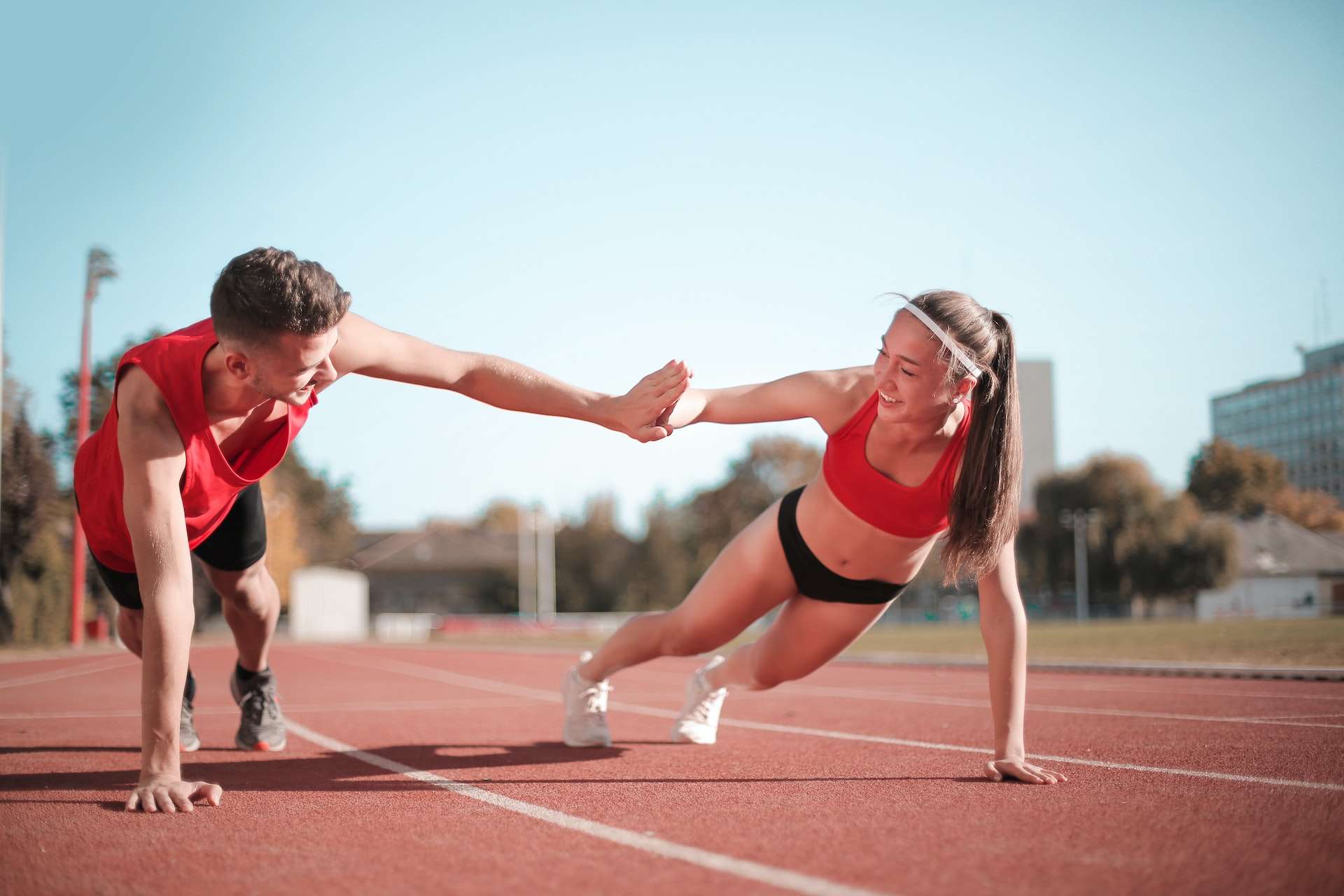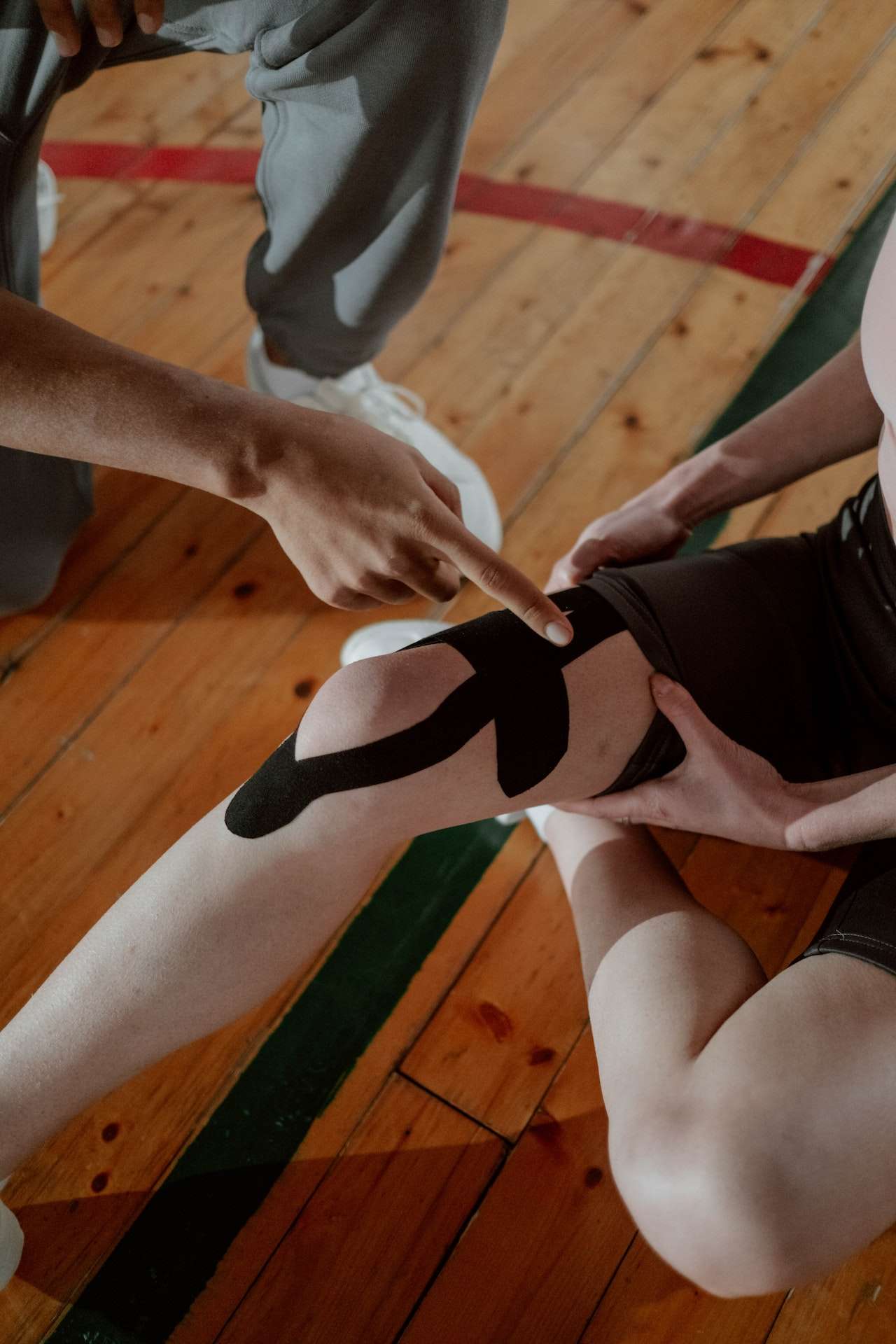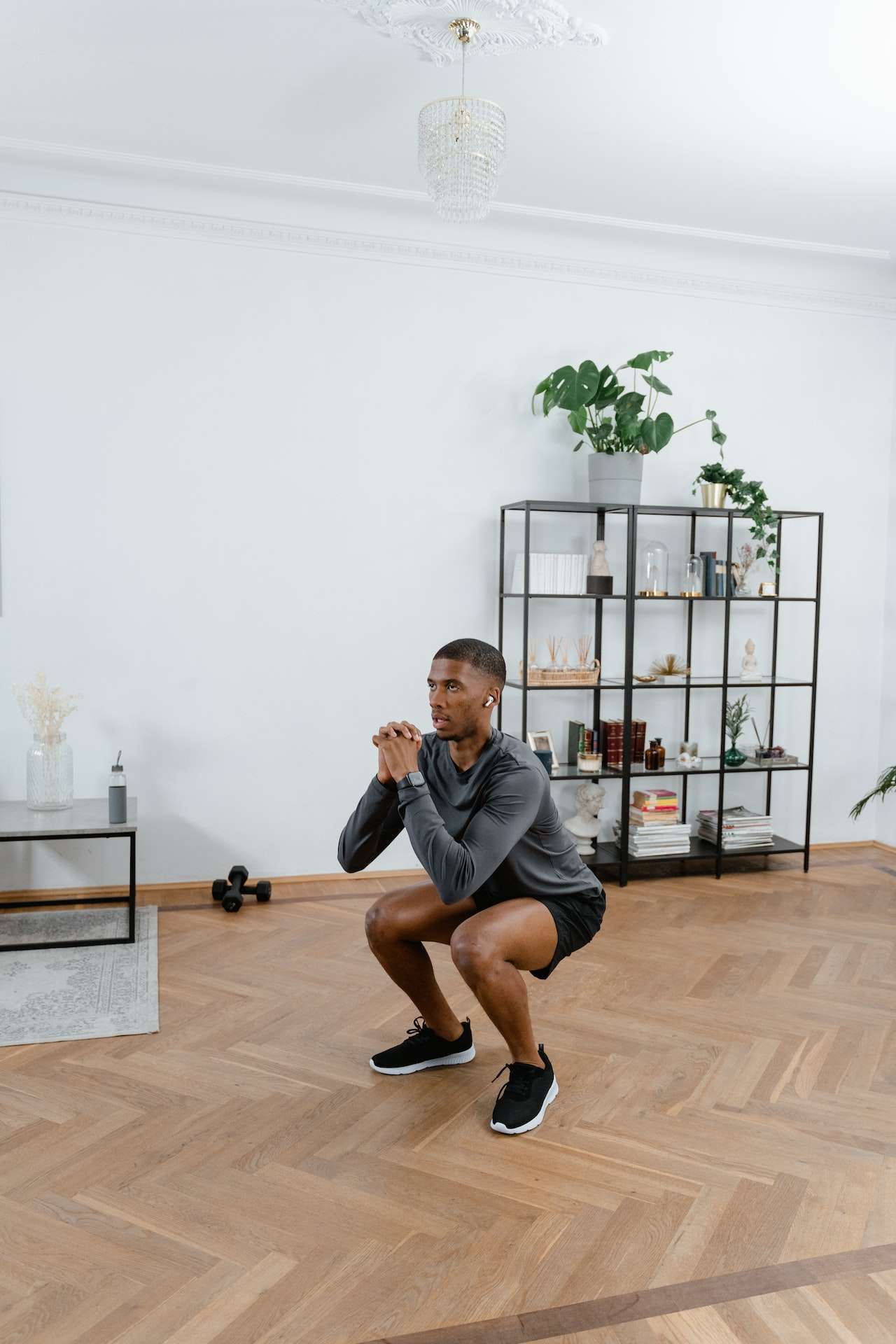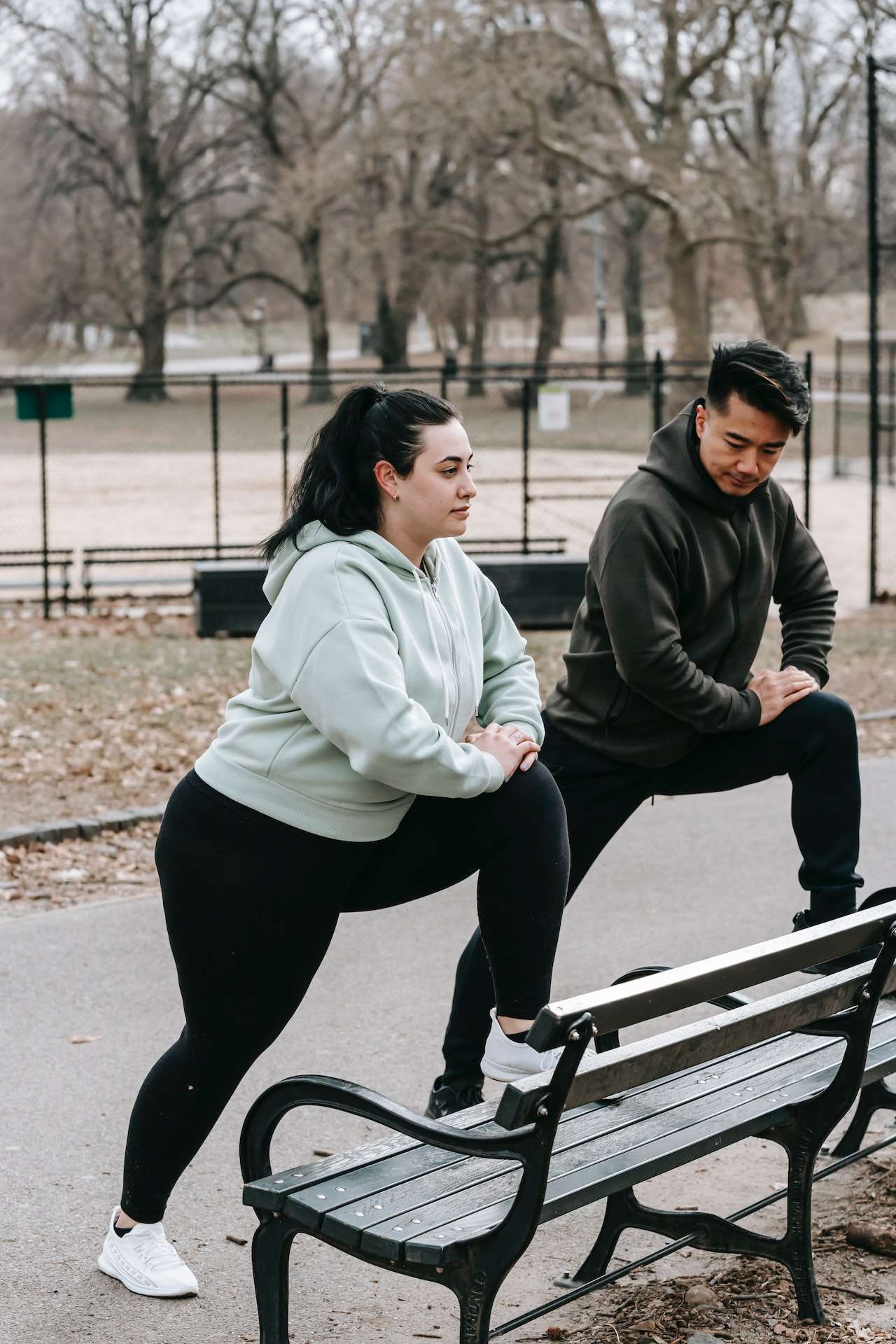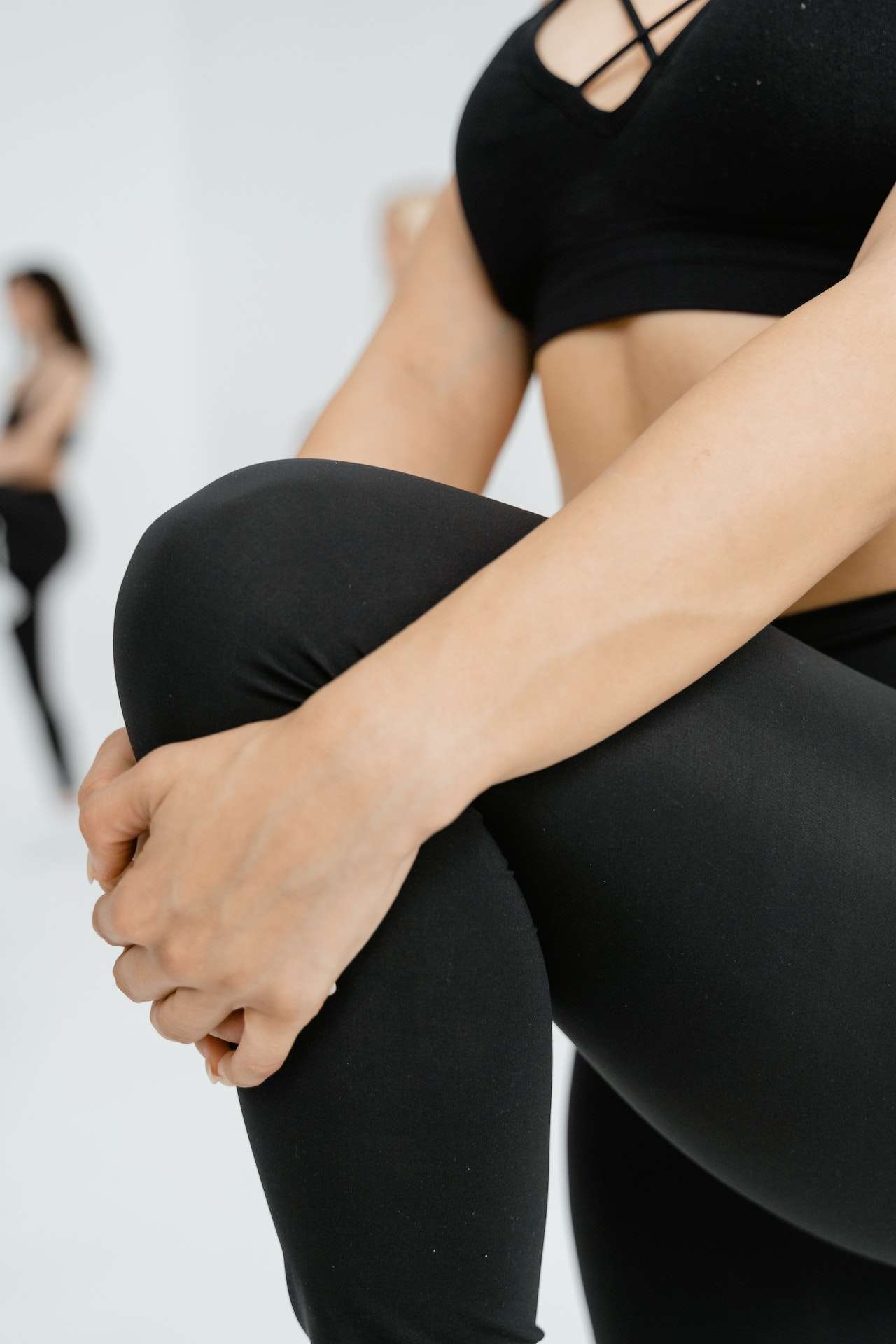|
Every runner knows the agony of sore knees. Despite all the strides we’ve made in the medical field, knees remain weak for many athletes. But what if there was an ancient exercise that could help you alleviate your knee pain? In this article, I will examine whether any exercises can help with knee pain from running. We all want to stay active and keep our bodies healthy, but knee pain can damper our fitness goals. Fortunately, we no longer have to suffer in silence – there are ways to reduce and even eliminate knee pain caused by running. From stretching techniques to strengthening exercises, I’ll explore the options available to runners looking for relief from their sore knees. The reality is that most of us need more time to invest hours into researching and trying out every potential solution. That’s why I’ve done all the hard work for you – in this article, I’ll lay out everything you need to know about how to ease your knee pain from running using simple but effective exercises. Let’s get started!
Table of Contents
show
Knee Pain From RunningKnee pain from running is common for joggers, runners, and athletes. It can be incredibly frustrating when it affects your ability to stay active and participate in sports you love—experiencing medial pain in your knee joint. At the same time, running can damage any physical activity. Fortunately, there are steps you can take to treat and manage the pain so that you can start running again soon. One of the best ways to alleviate knee pain from running is to perform exercises that strengthen the muscles around the knee area.
Pain in the side of your knee when running or inner knee pain when running can be caused by weak muscles that can’t support your joints as well as they should. Exercises like squats, lunges, wall slides, and hamstring stretches can help build muscle strength in the legs and hips, which can help reduce pain in the knee joint when running. In addition to strengthening exercises, giving yourself enough time to rest after an injury or flare-up of an existing issue is essential. Knowing how long to sleep with knee pain from running will depend on how severe it is and what kind of treatment you’re receiving from a doctor or physical therapist. Pain inside the knee from running should also be treated with ice packs, compression bandages, and anti-inflammatory medications where appropriate for quick relief and healing. Taking these steps may help relieve those experiencing pain in their knees while running, but it’s essential to understand what could be causing it so you can make sure it doesn’t happen again. Causes Of Knee Pain While RunningRunning is an excellent form of exercise that can provide numerous health benefits – however, there’s no denying it can be hard on the joints. Unfortunately, knee pain while running is an all too common problem. To understand why this type of pain occurs, it’s essential first to identify the potential causes. One common cause of knee pain while running is weak hip abductors and glutes. The hip abductors and glutes help support the alignment of the lower body, which means when they are not functioning as they should, pain in your knee may occur – even when you’re not running! Also, poor form or technique when running can cause knee pain – for example, if your foot strikes the ground in a way that puts more strain on the knee than necessary. In addition to these issues, runners can experience inflammation and ligament tears if they push themselves too hard or become injured. All of these causes can lead to various types of knee pains, such as pain in the knee after running on a treadmill, pain in the back of the knee from running, or even pain in the knee when bending and running. What’s more, you might even experience pain in your knees just from running but not walking! Regardless of the discomfort you may feel in your knees due to running, it’s essential to address any issues quickly and effectively with strengthening exercises. Importance Of Strengthening ExercisesRunning is an excellent way to get fit and stay in shape, but it can also take a toll on your knees. According to a study, 80% of runners suffer knee pain at some point during their running career. That’s why a strengthening routine is essential for any runner who wants to minimize their risk of knee pain or injury. Strengthening exercises are designed to target the muscles that stabilize the knee joint. This can help decrease pain in the knee cap, back of the knee, joint, side of the knee, or anywhere else you may feel discomfort from running. Adding these exercises to your workout routine can help protect yourself from future pain and keep running longer. There are countless exercises available for strengthening your knees and hips for running. Many require no equipment and are easy to do at home or outside without going to the gym. Some examples include squats, split squats, lunges, wall sits, single-leg bridges, and clamshells. Each exercise targets different muscles, so finding the best combination is essential.
These strengthening exercises can make all the difference in preventing and managing knee pain while running. Strengthening your muscles helps improve stability around your joints and enhances mobility, leading you toward better overall performance as a runner. As such, having a routine focused on strength training should be part of every runner’s plan for achieving optimal performance and avoiding injury caused by poor form or muscle imbalances. So if you’re looking to reduce your risk of knee pain from running, incorporating regular strengthening exercises into your workouts is an effective way to get started! Not only will they help protect against future injuries, but they’ll also give you more energy on those long runs! Stretching Exercises For Knee PainIt’s estimated that nearly 20 million Americans suffer knee pain due to running-related injuries. A runner’s knee, a common injury, can cause immense knee pain down the leg. Stretching exercises are beneficial for reducing and preventing this type of pain. From pain in the knee after running with no swelling to soreness below the knee from running on concrete, various stretches can help alleviate your discomfort. For example, wall squats can strengthen your quadriceps and reduce pressure on your knees when running. You can also try a lying hip flexor stretch to target any tightness or tension around your hip area that may be causing your pain. Additionally, hamstring stretches can help release tension built up in your upper leg muscles and prevent them from pulling on your kneecap. Stretching regularly is critical for maintaining healthy knees while running. It’s essential to focus on trying before and after you run to ensure your muscles remain flexible and balanced. Besides stretching, it’s also necessary to warm up before each run with dynamic exercises like walking lunges or butt kicks so you’re not putting too much strain on your body all at once. These steps will help you keep running without worrying about debilitating knee pain down the line! Strengthening Exercises For The QuadricepsOne of the best ways to keep knee pain from running at bay is to strengthen your quadriceps. It’s like a piece of a puzzle—if one part isn’t vital, the entire body suffers. Strengthening these muscles can help with any pain in the knee from running, whether during or after a run or even if it runs down your shin or thigh. Think of it this way: your quadriceps are the powerhouse behind any movement involving your knee, which is why strengthening them can help prevent issues like pain in the front of the knee from running, as well as pain behind the knee in other areas. Here are some exercises you can do to start strengthening them:
These exercises will help build strength within the quadriceps and reduce any pain in the medial knee when running, along with pain in the back of the knee running down the leg that weak quads could cause. As they become more robust, so will your legs, allowing you to enjoy more time on the pavement without any worries about knee pain from running! Now let’s move on to strengthening exercises for the hamstrings… Strengthening Exercises For The HamstringsStrengthening the hamstrings is essential to a runner’s routine to prevent and alleviate knee pain. This set of muscles runs from your hips to your knee, and when it’s weak, the knee takes more impact from running, leading to injury and pain. Exercises like hamstring curls and Romanian deadlifts are excellent ways to strengthen your hamstrings. An anecdote illustrating the importance of strengthening your hamstrings is that of a marathon runner who experienced knee pain while running. To manage the pain, they began performing hamstring curls daily and noticed a significant decrease in knee pain after just one week. This showed that even small changes in exercise could substantially impact reducing knee pain from running. You must ensure you’re not over-exerting when performing exercises like hamstring curls, as this can cause further damage or discomfort.
Start with lighter weights or resistance bands so you don’t strain your muscles too much at once. Additionally, stretching before and after any strenuous activity involving your hamstrings is recommended for greater flexibility and reduced stiffness. These exercises can also help reduce hip and lower back pain associated with running; strong hamstrings will help support the hips more effectively, preventing them from becoming overly tight or strained during runs. It’s also important to remember that any exercise done in moderation can be beneficial for reducing knee pain when running – such as yoga poses specifically designed for runners – as well as stretching activities like foam rolling which target all muscle groups involved in running. By focusing on these specific exercises to strengthen our hamstrings and keep them flexible, we can ensure better overall performance while running and reduce the risk of experiencing any long-term damage or pain in our knees due to running. If you experience ongoing or intense levels of discomfort while exercising, then it’s best to speak with a medical professional about how to manage these symptoms properly. Now let’s move on to strengthening exercises for our glutes! Strengthening Exercises For The GlutesWe all know that running can be tough on the legs, especially our knees. But if you suffer from knee pain from running, don’t despair – plenty of strengthening exercises for the glutes can help alleviate the pain. Let’s look at these exercises and how they can help get your knee pain under control. I’m sure your first thought is ‘easier said than done,’ but bear with me! Strengthening your glutes will give your knees more support and stability when you’re out on the run, decreasing the chance of experiencing any pain in the knee from running. Whether it’s a pain in the knee cap from running, pain in the inside knee from running, or even sharp pain in the knee when running downhill. What’s great about these glute-strengthening exercises is that they won’t just help with nerve pain in the knee from running. They’ll also reduce the chance of having ongoing issues like right knee pain from running or left knee pain from running that may not go away even after taking a break from exercising. So don’t stop these exercises if you want to rid yourself of that pesky knee pain from running, not going away! So there you have it – strengthening your glutes should be essential to any runner’s routine if they want to keep their knees strong and healthy. Ready to learn how to target those calves next? Let’s go! Strengthening Exercises For The CalvesIf you’re feeling the pain in your knees from running, it might be time to target those calves. Strengthening your calf muscles can help alleviate knee strain and reduce pain. To ensure you’re getting the most out of it, let’s dive into a few exercises that can help with knee pain from running. Let’s get creative with an exercise that will fire up those calf muscles: toe raises. By standing on a step or platform and lifting your toes up and down while keeping your heels flat on the surface, you can work those calf muscles while simultaneously improving balance.
This simple yet effective move will relieve knee pain from running and any other pain behind the knee, inner knee, inside of the kneecap, or below the inner knee that may come with it. No matter which type of pain in the knee from running you may be experiencing – whether it’s pain in the knee cap from running, pain in the inner knee while running, or even pain on the inside of the kneecap when running – strengthening your calves can provide significant relief. And fortunately for us runners who are dealing with this pesky problem, there are plenty of other exercises we can do to combat our knee woes! So let’s move on to cross-training for those nagging aches and pains… Cross-Training For Knee PainAh, the age-old problem – knee pain from running. Many of us have experienced it at one time or another, and it can be debilitating. But never fear – there are steps you can take to help alleviate the problem. Cross-training is one such method. For those who don’t know, cross-training is a form of exercise to supplement your primary workout routine. It usually involves lower-impact activities such as swimming, biking, and yoga, which still provide an excellent physical workout without putting as much stress on your joints. Here are some specific tips for easing knee pain from running: 1) Swimming – is an excellent way to get in shape without putting too much strain on the knees. The water’s buoyancy helps support your body weight and reduce joint stress. 2) Biking – Bicycling is also low-impact and can help build leg strength while reducing pressure on the knees. 3) Yoga – Regular yoga can help improve flexibility and strength in the muscles surrounding your joints, helping to reduce pain from running over time. 4) Cross-training can help reduce knee pain from running by providing an alternative exercise form that doesn’t stress your joints as much. So if you’re dealing with knee pain from running, try cross-training – you may find it helps more than you expected! Here, we look at low-impact exercises specifically designed for knee pain relief… Low-Impact Exercises For Knee PainUgh, the dreaded knee pain from running. It can seem like a never-ending cycle; you go for a run, and then you’re hobbling around with an unbearable pain in your knee. Don’t worry if this sounds familiar to you, don’t worry—you’re not alone! The good news is that plenty of low-impact exercises can help alleviate knee pain from running. Whether it’s a sharp pain in your knee from running or soreness in the back of your knee from a treadmill session, these exercises can be highly beneficial. Try stretching the quadriceps and hamstrings muscles with some simple leg lifts. Doing this will help to loosen tight muscles around the knee joint and reduce any stiffness that may be causing discomfort. Additionally, swimming is an excellent exercise for those dealing with knee pain from running shoes or other types of physical activity. The buoyancy of the water helps to take pressure off the joints while still providing a great cardio workout. So if you ever find yourself stuck in a rut with chronic knee pain, try incorporating low-impact exercises into your routine! From swimming to simple stretches, these activities can help improve your overall fitness level while providing much-needed relief for any pesky pains in your knees caused by running or working out. Conclusion:It’s important to remember that various factors can cause knee pain from running and that strengthening exercises are essential for alleviating it. Strengthening the quadriceps, glutes, and calves is essential to any treatment plan for knee pain from running. Additionally, cross-training activities and low-impact exercises can help reduce stress on the joint. One interesting statistic is that up to 70% of runners experience knee pain while running. This should remind all runners to monitor their knee health closely and ensure they do everything possible to prevent injury. Stretching consistently before running and incorporating strengthening exercises into your routine is the best way to ensure you stay healthy and free from knee pain. This will help reduce the risk of developing chronic knee pain from running and keep you active for years. |
